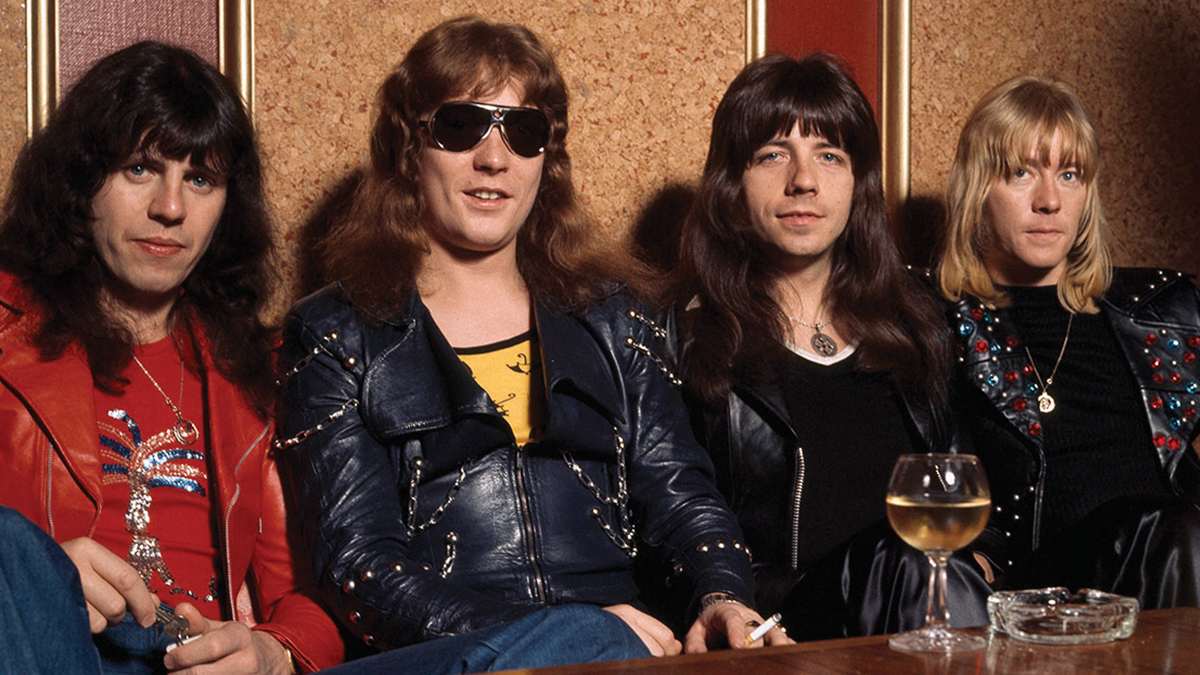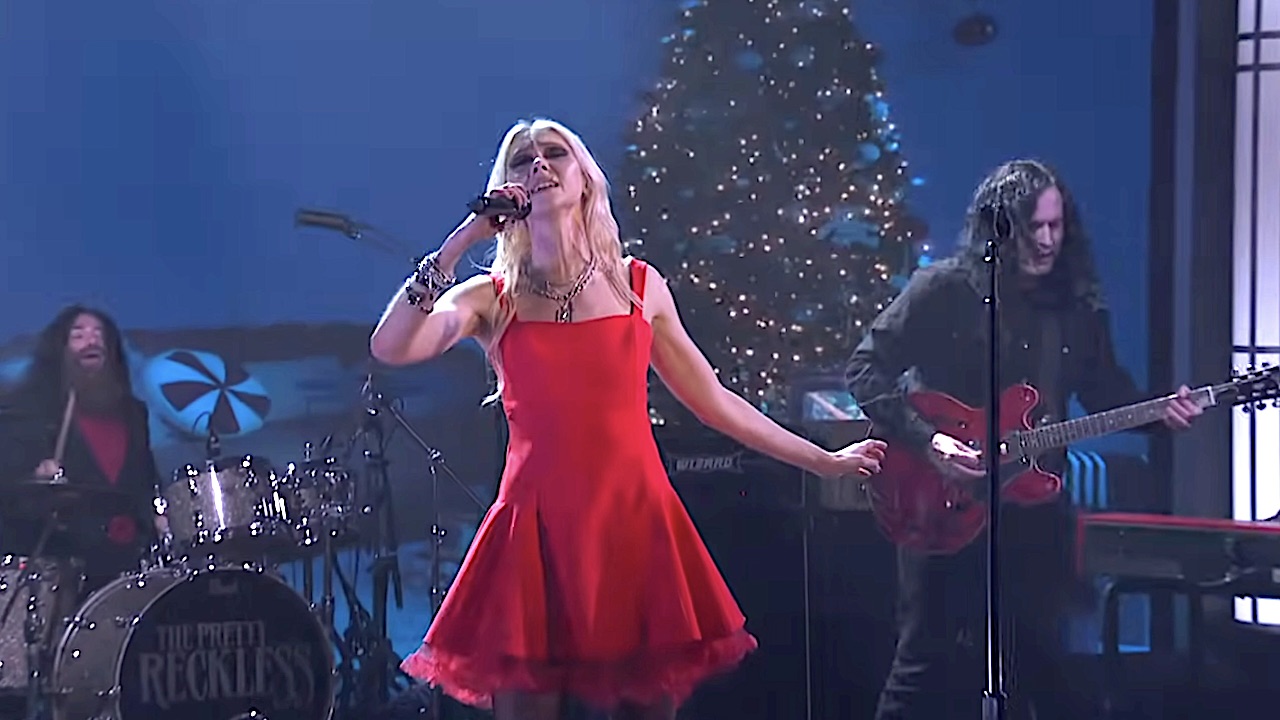Greatest Albums Of The 70s: 79-66
From The Sweet to Free, our 70s albums countdown continues...

Our Greatest Albums Of The 70s, numbers 79 to 66.
79) DESOLATION BOULEVARD – Sweet (RCA, 1974)
Until wresting their destiny from songwriters/hitmakers Chinn and Chapman, Sweet were still known for making bubblegum 45s. Sweet Fanny Adams saw them morph into a fully fledged hard rock band capable of holding their own with just about any of the era’s more credible names. DL
What they said at the time: _“Sweet stood to lose much in making this album. Had it failed they’d have looked extremely silly, but they haven’t.” Disc _
Had Sweet always harboured ambitions to develop into a Deep Purple/Zeppelin-esque hard rock band?
Andy Scott (guitar): The plunge was inevitable. Mike [Chapman] and Nicky [Chinn] had gone to LA and they didn’t come back. It was time to go it alone – an album with no singles on it.
Even the album’s title was challenging, wasn’t it?
Sign up below to get the latest from Classic Rock, plus exclusive special offers, direct to your inbox!
We had wanted to call it Sweet Fuck-All.
Slapping on the make-up had made Sweet regulars on Top Of The Pops. Do you still wonder whether the breakthrough to hard rock’s A-list – that eventually proved elusive – could have been achieved without the cosmetics and über-camp carry-ons?
It’s difficult to know… You can never un-fry the egg. Those early pop hits of ours were as catchy as Agadoo, which was, of course, very detrimental.
Your own version of Sweet still tours Europe, with the rock element somewhat diluted in favour of the hits.
We still do some of our hairier songs – the ones with a bit of meat to them – when we play abroad.
Is it realistic to hope that Sweet could go out on a full-blown hard rock tour, revisiting vintage headbangers like Set Me Free, Yesterday’s Rain and Windy City?
I’d very much love to do that. The line-up would probably need expanding to make a tour like that work, but I’ll never rule it out.
In the meantime, you’re working on an album with Suzi Quatro and Slade drummer Don Powell.
It’s called QSP. A lot of stuff is already recorded and there are plans for some gigs. It’s rock music, but it doesn’t sound like a mix of Sweet, Slade and Suzi.
78) TEENAGE HEAD – Flamin’ Groovies (Kama Sutra, 1971)
Boasting a similar dynamic to the Stones’ Sticky Fingers album of the same year, Frisco’s Groovies went head to head with ‘The Greatest Rock ’N’ Roll Band In The World’ at the peak of their powers – and according to Mick Jagger, made the better record.
What they said at the time: “The best American album I’ve heard this year, but much more noteworthy is that Teenage Head is close to being the best hard rock album ever released by an American rock group.” The Rag
77) LIVE – Foghat (Bearsville, 1977)
An early example of the phenomenon known as ‘big in the States/minnows at home’, Foghat formed in London following the break-up of Savoy Brown in 1970, and included some of the latter’s members. But it was blue-collar America that went berserk for Foghat’s high-intensity boogie-rock, driven by some of the most incendiary slide guitar that you’ll ever hear, courtesy of Rod Price.
What they said at the time: “An album so brash that it makes Kiss sound like a folk act.” Circus
76) PARCEL OF ROGUES – Steeleye Span (Chrysalis, 1973)
Following the departure of folk mainstays Martin Carthy and Fairport Convention’s Ashley Hutchings, Steeleye signed with manager Jo Lustig for his deft elevation of Pentangle and Ralph McTell. Their second album under him married traditional songs to a theme of Robert Louis Stevenson’s adventure novel Kidnapped, but walloped up the rock element to change the band’s direction – and fortune – for good.
What they said at the time: “Old songs poured so full of vibrant electricity that they damn near burst.” NME
75) THE CARS – The Cars (Elektra, 1978)
Merging synths and guitars, The Cars’ debut album pretty much nailed the skinny-tie new wave sound in the US. The slick production burned like ice on the hits My Best Friend’s Girl and Just What I Needed.
What they said at the time: “The fashionable cheekbones and slightly synthetic, clean, seen-it-all-before stance of a group who could go all the way. Or park it here.” NME
74) H TO HE, WHO AM THE ONLY ONE – Van Der Graaf Generator (Charisma, 1970)
The songs here were themed around the notion of isolation, and the music reflected this feeling. As on previous albums, VDGG took almost perverse artistic risks, resulting in poor sales and mixed reviews. But their prog stock has risen over the years.
What they said at the time: “Van Der Graaf Generator should be one of the groups most likely to succeed in 1971.” Record Mirror
73) ARGUS – Wishbone Ash (Decca, 1972)
The album that topped Sounds readers’ poll at the end of ’72 wasn’t Purple’s Machine Head, Sabbath’s Vol. 4, or Bowie’s Ziggy Stardust, but Argus by Wishbone Ash. A beguiling, melodious mix of heavy rock, prog and folk, and with some nifty twin-lead guitar playing that was groundbreaking for the time, Argus was steeped in English mysticism. Its ambience was enhanced by the enigmatic sentinel depicted on its Hipgnosis cover, even though the photo was actually taken in Provence, France.
What they said at the time: “With debts to The Who, Traffic and The Beatles as well as to Yes, Argus’s songs are loaded with energy and overall good feelings.” Rolling Stone
72) DON’T LOOK BACK – Boston (Epic, 1978)
Unfairly overlooked in the stampede to praise their multi-platinum-selling debut, Don’t Look Back was no mere tatty replica of it. Although guitarist/mastermind Tom Scholz later moaned of being hurried in its completion – despite a thousand hours of studio time – the results topped the US Billboard chart – something that its predecessor failed to do.
What they said at the time: “Don’t Look Back isn’t a departure from, but a consolidation of, the sound introduced on Boston’s dazzling first album.” Rolling Stone
71) CHICAGO II – Chicago (Columbia, 1970)
Previously called Chicago Transit Authority, the 14-legged juggernaut dropped the TA and forged on with this energetic double album that took in free jazz, hip-shaking R&B and an Abbey Road-like six-song suite. Slipping down the back of the sofa of time as they evolved into soft-rock giants, punchy rocker 25 Or 6 To 4 is a reminder of the band’s raw live power.
What they said at the time: “Each recording develops into virtually uncharted territory… Basie with the broad appeal of Cole Porter.” Disc
70) FREE AT LAST – Free (Island, 1972)
Having split the previous year, 1972’s reconstituted version of Free offered a more muted alternative to their usual hard-rocking blues. The songs were thus more reflective and exploratory, typified by the burnished beauty of standouts Guardian Of The Universe and Little Bit Of Love.
What they said at the time: “They’ve decided to re-channel their energies into simple straight-ahead compositions on a par with All Right Now for the future.” Rolling Stone
69) BRIDGE OF SIGHS – Robin Trower (Chrysalis/Capitol, 1974)
Robin Trower was always more in thrall to American blues than to the British boom, and the epic stylings of Day Of The Eagle and In This Place helped Bridge… stay in the US chart for 31 weeks. On the flip side, it didn’t set tills ringing on home turf.
What they said at the time: “Trower admits to drawing his inspiration from Jimi Hendrix… in coherence and flash, his solos bear comparison with his mentor’s.” Rolling Stone
68) (I’M) STRANDED – The Saints (EMI, 1977)
Coming up at the same time as the Ramones in New York City, Brisbane’s Saints honed a similarly loutish punk bludgeon of their own. Banging out their debut in two days wasn’t a problem for ‘the most primitive band in the world’, and (I’m) Stranded blurred by in a slack-jawed firestorm of bullish machismo. Slouching into London as the punk wars raged, they couldn’t even be arsed to get a haircut.
What they said at the time: “Albums of this power and velocity are pretty rare. It’s like having your hair burned off with a flame-thrower.” Zigzag
67) CRIME OF THE CENTURY – Supertramp (A&M, 1974)
Five years before Supertramp’s world-conquering Breakfast In America, they prepared the ground with this suite of fabulous songs about growing up and loneliness. A mix of spiritual ruminations and radio-friendly art rock, School, Rudy and hit single Dreamer were also purpose-built for hi-fi buffs looking for something new after Dark Side Of The Moon.
What they said at the time: “Crime Of The Century has the makings of a monster.” NME
66) FORCE IT – UFO (Chrysalis, 1975)
Force It was UFO’s second album to feature Michael Schenker as guitarist, continuing a growing sense of sophistication. That two-thirds of its songs would become staples of the band’s live act says pretty much everything.
What they said at the time: “Michael Schenker can play guitar as scalding as the hot tap, or as icy as the cold one.” Sounds
Classic Rock is the online home of the world's best rock'n'roll magazine. We bring you breaking news, exclusive interviews and behind-the-scenes features, as well as unrivalled access to the biggest names in rock music; from Led Zeppelin to Deep Purple, Guns N’ Roses to the Rolling Stones, AC/DC to the Sex Pistols, and everything in between. Our expert writers bring you the very best on established and emerging bands plus everything you need to know about the mightiest new music releases.

